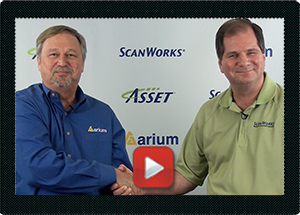It’s tough – no, impossible – finding root causes without
insight. Or, more specifically, without visibility into what’s happening. In a
very real sense, this is what today’s announcement that ASSET and Arium are
becoming one company is all about.
You might be
wondering: why would a hardware-oriented validation and test company like ASSET
join up with a software debug company like Arium? Quite simply, this will
empower the ScanWorks® platform for embedded instruments with greater visibility
across a broader spectrum of hardware and software faults which can plague new
products and delay their delivery to the marketplace. With the additional
insight into registers, software code and embedded instruments that Arium’s
tools bring to ScanWorks, our users will be able to shorten their
time-to-revenue for new system designs.
Stumbling Blocks
Developers must be able to certify that their designs work
the way they are supposed to work before a design can be released to
manufacturing. That requires validating and testing the hardware, and debugging
the software that will interface the operating system to the hardware. That interface
between hardware and operating system software is a critical plane in a
system’s hierarchical architecture. Given the explosive growth of this software
layer resulting from the proliferation of multiple processing cores,
processors, parallel software threads and many other complicating factors, an
engineer’s visibility into this software layer is essential for timely new
product introductions. Unfortunately, this visibility has become harder to find
as system complexity has increased.
Arium’s tools are hardware-assisted JTAG-based
tools that look for and diagnose problems from the bottom up, from the hardware
level looking up into the software. That means a functioning OS doesn’t have to
be present and this could enable concurrent engineering processes which can
significantly shorten development cycles. Engineers don’t have to wait for an
OS to begin debugging the system. In addition, bottom-up debuggers can give
greater visibility – there’s that word again! – into the interactions between
the hardware and software.
Bottom-up /
Inside-out: Turnabout is fair play
ScanWorks is no stranger to going against the grain. Our
embedded instrumentation mantra over the last five years has been about looking
at problems from the inside out, not from the outside in as traditional
external test technologies have always done. Now, the bottom-up approach of
Arium tools brings a new perspective to ScanWorks, one that gives you the kind
of visibility needed for systems that are made up of increasingly more software
and more complex hardware.
Want to know more about this exciting news?
We’ve put together a short video of me and Larry Traylor, former president and
CEO of Arium and now a vice president at ASSET, discussing the many benefits in
store for ScanWorks users. Click here to
view the video and access a white paper on the new ASSET InterTech.



